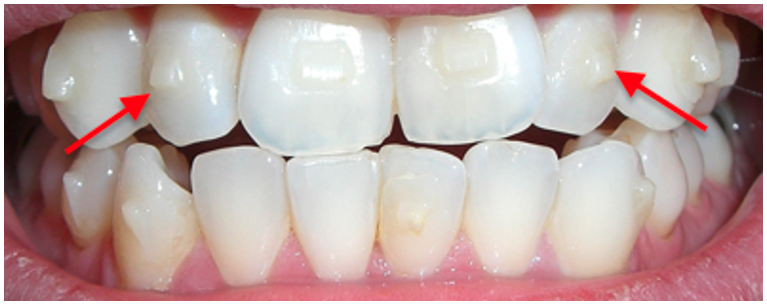"How Attachments Help Aligners Work Better – Explained Simply"

written by Dr Shaik Farhatulla, Reviewed by Dr satish Chandra date: 08.07.2025 "How Attachments Help Aligners Work Better – Explained Simply"
Clear aligners are custom-made plastic trays that gently move your teeth over time. But unlike traditional braces, aligners don’t have wires or brackets—so they sometimes need extra help to move certain teeth. That’s where attachments come in.
📌 What Are Attachments?
Attachments (also called engagers) are tiny tooth-colored composite shapes bonded to specific teeth. They:
Come in different shapes and sizes (like squares, rectangles, ellipses)
Are barely visible and match your tooth color
Act like handles or anchors for your aligners to push or pull against
🧠 Think of attachments like handles on a suitcase—they give something for the aligner to grab onto.
⚙️ How Do Attachments Help?
Attachments help aligners:
Move stubborn teeth (like canines or rotated teeth)
Create complex movements like rotation, extrusion (pulling a tooth out), or intrusion (pushing it in)
Distribute force more precisely, helping aligners apply pressure exactly where it's needed
Increase aligner grip so trays stay firmly seated on your teeth
Reference: Kravitz ND et al. (2009) found that attachments improve aligner control over difficult movements like root torque and tooth rotation.
Source: Am J Orthod Dentofacial Orthop. 2009;135(1):27–35.
🔄 Are Attachments Permanent?
No! Attachments are:
Temporary – Removed at the end of treatment
Painless to apply and remove
Made from the same safe composite resin used for tooth-colored fillings
🧼 Do Attachments Affect Eating or Brushing?
Not much. However:
Food may cling around them, so brushing after meals is important
Flossing may require a bit more care, especially around attachment areas
You still remove aligners to eat and drink, just like always
🧪 Why Not Everyone Gets Attachments
Not all cases need them. Your orthodontist will decide based on:
The type of tooth movement required
Tooth shape, size, and alignment
The complexity of your treatment
Reference: Papadimitriou et al. (2018) emphasized that attachments enhance predictability in clear aligner therapy for complex cases. Source: Progress in Orthodontics. 2018;19(1):8.
📚 References
Kravitz ND, Kusnoto B, Agran B, Viana G. How well does Invisalign work? A prospective clinical study. Am J Orthod Dentofacial Orthop. 2009;135(1):27–35.
Papadimitriou A, Mousoulea S, Gkantidis N, Kloukos D. Clinical effectiveness of Invisalign® orthodontic treatment: A systematic review. Prog Orthod. 2018;19(1):8.
Proffit WR, Fields HW, Sarver DM. Contemporary Orthodontics. 5th ed. Mosby Elsevier; 2012.
